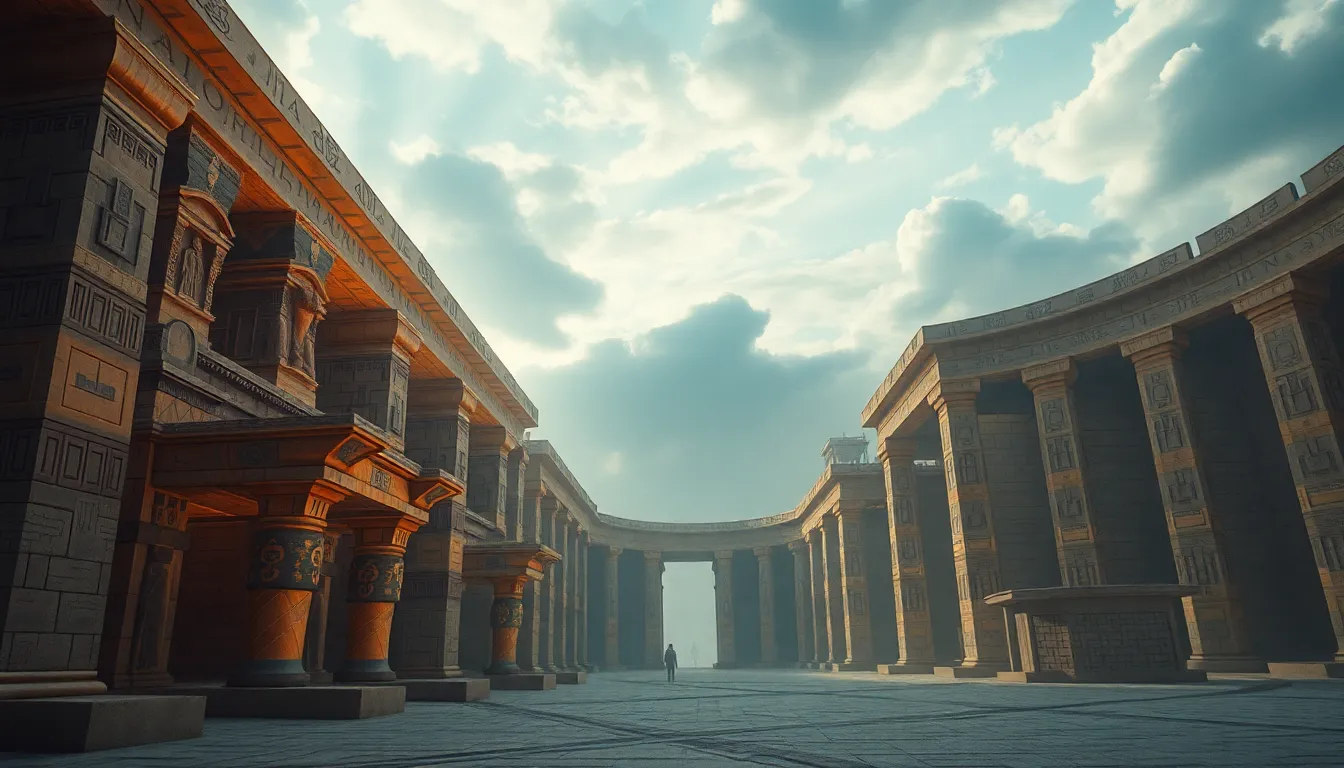The Myths of Pharaoh Ramses II’s Building Projects
I. Introduction
Ramses II, often referred to as Ramses the Great, is one of the most renowned pharaohs of ancient Egypt. His reign from 1279 to 1213 BCE marked an era of prosperity, military might, and monumental architecture. As a key figure in Egyptian history, Ramses II’s legacy is often shrouded in myths, particularly concerning his extensive building projects. This article aims to debunk some of the prevalent myths surrounding his architectural achievements and offer a clearer understanding of his contributions to ancient Egyptian society.
II. The Legacy of Ramses II
Ramses II ruled for an impressive 66 years, making him one of the longest-reigning pharaohs in ancient Egypt. His reign is characterized by military campaigns, the expansion of the Egyptian empire, and remarkable architectural endeavors. Notable achievements during his time include:
- The construction of the temple complex at Abu Simbel
- The Ramesseum, his mortuary temple in Thebes
- The completion of the Hypostyle Hall at Karnak
- Numerous statues and monuments across Egypt
The ambitious scale of these projects reflects Ramses II’s desire to immortalize his legacy and demonstrate the power of the pharaoh.
III. Myth 1: Ramses II Built the Pyramids
One of the most persistent myths is that Ramses II was responsible for the construction of the pyramids. In reality, the pyramids of Giza were built centuries before Ramses II’s reign, around 2580-2560 BCE. The timeline of pyramid construction establishes that:
- The Great Pyramid of Giza was constructed during the Fourth Dynasty.
- Ramses II reigned in the Nineteenth Dynasty, long after the last pyramid was built.
This myth likely stems from a misunderstanding of Egyptian history and the iconic status of the pyramids as symbols of ancient Egypt.
IV. Myth 2: Ramses II Was Solely Responsible for Major Monuments
Another commonly held belief is that Ramses II single-handedly constructed all the major monuments attributed to him. However, construction in ancient Egypt was a collaborative effort involving:
- Skilled laborers who specialized in various trades.
- Architects and engineers who designed the structures.
- Artisans who crafted the intricate decorations and statues.
Ramses II did commission many of these projects, but it is essential to acknowledge the collective effort that went into the construction of these monumental buildings.
V. Myth 3: All Structures Attributed to Ramses II Were Completed During His Reign
It is a common misconception that every structure associated with Ramses II was completed within his lifetime. In reality, many of the projects attributed to him were initiated by previous pharaohs or continued by successors. Key points include:
- Some temples and monuments were started by his father, Seti I.
- Ramses II expanded upon existing structures, enhancing their grandeur.
- Later pharaohs, including Ramses III, continued work on projects initiated by Ramses II.
This highlights the ongoing nature of construction in ancient Egypt, where rulers built upon the legacies of their predecessors rather than starting from scratch.
VI. Myth 4: Ramses II’s Building Projects Were Only for His Own Glory
While it is true that Ramses II aimed to glorify himself through his monumental constructions, these projects also held significant religious and cultural importance. The temples and monuments served various purposes:
- They were places of worship and devotion to the gods.
- They provided economic benefits through tourism and pilgrimage.
- They helped unify the people of Egypt under a shared cultural heritage.
Ramses II understood that his building projects were not merely for personal glory but were integral to the identity and stability of ancient Egypt.
VII. The Real Impact of Ramses II’s Building Projects
The legacy of Ramses II’s building projects extends far beyond his reign. The architectural innovations and grand designs influenced not only his contemporaries but also future generations. Key impacts include:
- Setting a standard for monumental architecture that subsequent pharaohs aspired to surpass.
- Influencing later civilizations, including the Greeks and Romans, who admired and emulated Egyptian architecture.
- Contributing to the preservation of Egyptian culture and religion through the continued use of his temples and monuments.
The long-term effects of Ramses II’s constructions continue to be felt, as they remain critical sites for both historical study and cultural heritage.
VIII. Conclusion
In summary, the myths surrounding Pharaoh Ramses II’s building projects often overshadow the reality of his contributions to ancient Egyptian society. By debunking these myths, we gain a clearer understanding of his legacy as a ruler who not only sought to immortalize his name but also fostered a vibrant culture and robust economy. Understanding the historical accuracy of Ramses II’s achievements is essential for appreciating the rich tapestry of ancient Egyptian history and its lasting impact on the world.




